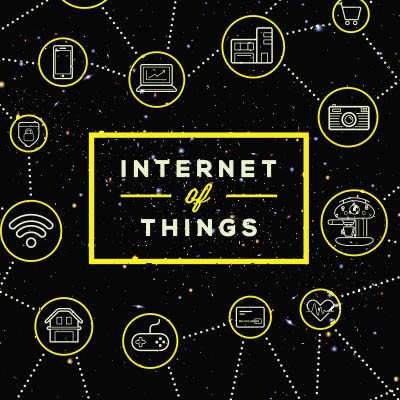The phrase “time is money” is something that you hear a lot, especially in the business environment. While this might be applied in small ways, such as employees taking one or two minutes longer on their breaks or leaving early for the day, the major issue with wasted time manifests itself in much larger and more unpredictable ways. The true silent killer of businesses is downtime, and you need to be aware of its impact on your organization on a holistic level.
Telesys Voice and Data Blog
It’s been said that those who don’t learn from history are doomed to repeat it. In business, this is more evident every day as organizations have to deal with all sorts of different problems. How business leaders react to those problems ultimately makes the difference between beleaguered results or success. Let’s take a look at three lessons business leaders should be learning from recent events.
Productivity is the core measurement of your business’ ability to complete the work needed to bring in revenue and to keep that work up consistently. Amazingly enough, most businesses experience similar productivity problems over time. What can a small and medium-sized business do to right the ship when productivity is down? Today we explore some ways to do just that.
The Android platform has various tools and applications available to assist users in keeping themselves organized and productive. One of these applications, Google Keep, offers particularly significant benefits. For this week’s tip, we’ll be going over some ways that you can use Google Keep to help “keep” track of the cornucopia of important information you need to process and retain.
It isn’t exactly business as usual, but things are beginning to resemble the reality we all knew before COVID-19, thanks to the use of cloud services as a means to continue processes while social distancing is still in play. However, some businesses may still be reluctant to embrace them.
Have you ever tried to manage a major IT project yourself? If you have, you know that it’s a huge time sink and that there’s a lot involved with the process. We’ll discuss four of the best ways that you can save time and resources while managing your latest technology implementation project.
For any business to be successful, it needs access to the technology solutions that allow it to operate efficiently. Your IT team is responsible for ensuring that this access is not interrupted, which isn’t an insignificant responsibility. However, by clearly defining goals for your IT team to strive for, you provide a benefit to all members of your staff.
Understanding what your customers need is a crucial first step toward improving the way your organization communicates with them. They expect a certain level of service, so how can you make sure to maintain it while still leveling with them on what they require of your business? A customer relationship management software, or CRM, is invaluable toward this end.
When it boils down to it, there are really only two ways to operate a business: proactively, or reactively. While many businesses still rely on their reactivity to deal with their technology issues, the opposite approach is demonstrably more effective for the modern business. Let’s explore some of the effects that a proactive and reactive strategy can each have on your operations.
You’re likely aware that we have a Help Desk for our clients to leverage, but not all companies handle their support the same way. Here, we wanted to share a few reasons that we are confident that our approach to support is better for our clients.
Inefficiency is not something that you plan for. It just happens. It happens when processes get too big, have too many moving parts, or are bogged down by excessive oversight. It happens when purposes for certain tasks change or are abandoned altogether. Other times efficiency has a different look to it and makes your optimistic projections look foolish. Whatever the reason, inefficiency is more the rule than the exception, and it’s costing your business plenty. This month, we take a look at what efficiency actually looks like and how to do your best to achieve it.
Phishing attacks have been around for decades, first being recorded in 1995 where scammers would pose as AOL employees and request a user’s billing information through instant messages. Nowadays, email phishing attempts have tricked users into handing over personal information of all kinds. There are many methods of identifying a phishing attempt, but today we’ll focus on one.
You know better than anyone that managing your business isn’t something to be taken lightly. Keeping your technology in proper working order is just the icing on the proverbial cake, making the task of managing your business even more difficult. If you’re using normal break-fix IT services, this might be the case. Alternatively, managed IT services aren’t designed to burden you.
Meetings: they’re known in the business world as a necessary evil. However, this doesn’t have to be the case. With a few adjustments, you can create the ideal conditions for effective and efficient meetings.
All businesses need to use some sort of technology to keep their operations moving forward. Yet, it’s often difficult to gauge how new solutions will function with your current systems. You need to take your options into careful consideration before making such an important choice, and only an analysis of your current setup will help you ensure the success of your new technology.
Spam is a tricky subject to talk about, as it seems everyone has a different definition for it. Yet, most have come to the conclusion that spam is a bad thing. For today’s Tech Term, we want to delve deep into the different kinds of spam out there, as well as theorize where the term even came from.
Whether it’s RFID sensors, mobile devices, or commercial goods, the Internet of Things (IOT) is an exponentially expanding industry. Which makes us think, “What can we expect in the near future for IOT?” Today, we will answer this very question.
Information technology plays a crucial role for today’s businesses, but in order for it to do so, these businesses need technology to use. IT procurement is a crucial part of any business’ success, which means that any business needs to have a provider that can deliver the value that they need.
You’re likely aware that we have a Help Desk for our clients to leverage, but not all companies handle their support the same way. Here, we wanted to share a few reasons that we are confident that our approach to support is better for our clients.
Managed services offer businesses an improved means of obtaining and managing the technology they rely on. With data being so important to the modern business, much of this technology is devoted to storing, securing, and leveraging this data. Working with a managed service provider can help a business get the most value out of their data management practices. Let’s go over how.
Mobile? Grab this Article!
Tag Cloud



















